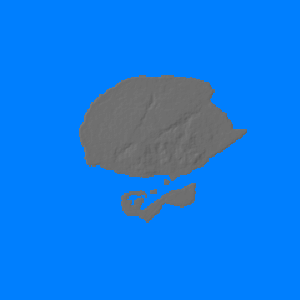![]() The Pacific War Online Encyclopedia
The Pacific War Online Encyclopedia
|
| Previous: Treasury Class, Coast Guard Cutters | Table of Contents | Next: Treaty Faction |

The Treasury Islands (155.57E
7.40S) are located south of the southern
tip of Bougainville
and southwest of the Shortland
Islands in
the Solomons. The largest
island is Mono Island to the north , while Stirling Island to the south
encloses the anchorage of Blanche
Bay. Mono Island is dominated by three old volcanoes reaching a maximum
height of 1053 feet (321 meters). The only suitable landing beaches
were near the village of Falamai (155.575E 7.398S) on the south coast of Mono near the
east entrance to Blanche Bay. Almost completely undeveloped when war
broke out, Mono did have a primitive road net supporting copra plantations. it was occupied by
the Japanese early in 1942.
New Zealand
8 Brigade Group landed
in the Treasury Islands beginning on 27 October 1943. The islands had
been scouted by Marine
Raiders from submarine Greenling
on 22-23 August 1943 and again by PT boats
on 21-22
October. The scouts reported that the garrison numbered just 225 men.
The New Zealand troops of the main landing force, some 5700 in number,
were reinforced
with 2000 U.S. antiaircraft and liaison troops.
The main landings comprised three waves commanded by George
H. Fort, who brought in the New Zealanders on 8 APDs, 8 LCIs, 2 LSTs, 8 LCMs, 3 LCTs, and 2 APcs escorted by destroyers Conway, Cony, Eaton, Pringle, Philip, and Renshaw. A novel feature of this landing was the use of two LCI gunboats, the first LCIs so modified in the Pacific.
Eaton provided fighter direction while Pringle and Phillip bombarded the landing areas. Resistance
was light, though one LST came under heavy machine gun fire from a hidden pillbox when she lowered her ramp. The New Zealanders aboard commandeered a Seabee
bulldozer and used its blade as an armored shield to advanced and bury
the pillbox under coral sand. The main objective, Blanche Bay,
was secured by nightfall. There were subsidiary landings on
Stirling Island, which confirmed that it was unoccupied, and at
Soanotalu ( 155.565E 7.331S) on the north coast, which was desired as a radar station.
The Japanese were caught
off-guard but mounted a raid by 25 D3A
"Vals". These lost 12 aircraft to antiaircraft fire and the Allied fighter cover in
exchange for damaging destroyer
Cony with two bomb hits.
There were also a number of counterattacks against the Soanotalu beachhead, beginning on 1 November, by Japanese troops desperate to capture the Allied landing craft and escape the island. By this time, the Seabees had constructed a pillbox, two platoons
from Stirling Island had been shifted to Soanotalu, and the position was
held. On 6 November the last Japanese resistance on the island was
eliminated.
Total Allied casualties were 40 New Zealand and 12 U.S. troops killed and 145 New Zealand and 21 U.S. troops wounded. About 305 Japanese were killed and another eight taken prisoner.
Following its capture, the island became a PT boat base
and an airstrip was constructed on Stirling Island. Its 5600 foot (1700
meter) runway became operational in late November and was extended to
7000 feet (2130 meters) by the end of December. By late 1944 the base
was far behind the active combat zone and it was disestablished in
March 1945.
References
Rentz (1946; accessed 2014-5-4)
The Pacific War Online Encyclopedia © 2010, 2013-2014 by Kent G. Budge. Index